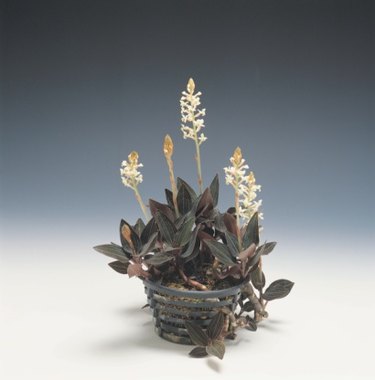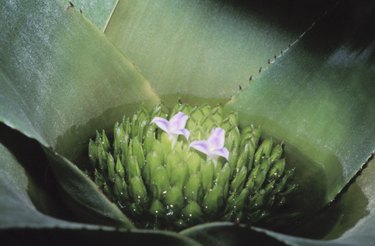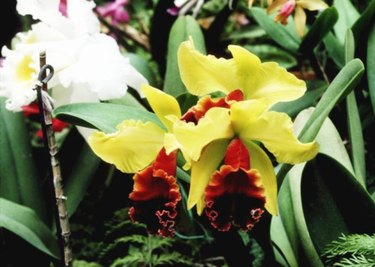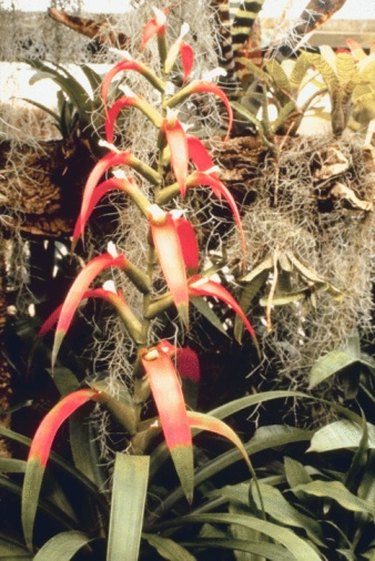
Orchids and bromeliads are two vastly different, not closely related plant types that include thousands of species growing in a wide array of habitats. Both plant families have species that are highly ornamental due to their flowers or leaves. According to the Free Dictionary, orchids have unusually shaped, beautifully colored flowers, while bromeliads are tropical colorful flowers with long, stiff leaves and showy bracts
Origins
Video of the Day

The name orchid is applied to any plant in the orchid family, Orchidaceae. Over 25,000 species of orchids exist across the world in various habitats, from tropical rainforests to deserts and polar tundra. Bromeliad is a name assigned to any plant in the bromeliad family, Bromeliaceae. About 2,800 species exist, all but one species native to mild-winter regions of North and South America.
Video of the Day
Orchid Features

Most orchid species are rhizome-rooted epiphytes that clasp their roots onto tree trunks, branches or moist rocks, especially in species-rich tropical habitats. Orchids native to temperate or polar regions are terrestrial, that is they grow in the ground, and have a food-storing organ, like a tuber or plump rhizome. Orchid flowers have a varied form or shape, always with parts in multiples of threes. A distinguishing feature of orchids is that one petal often is shaped like a lip. Orchid flowers are pollinated by a wide array of insects or animals, usually determined by size, color and shape of the blossom.
Bromeliad Features

Bromeliads are either epiphytes or terrestrial in growth. Most form a rosette of leaves and produce a large, long-lasting flower stalk or inflorescence from the center of the rosette. Often the inflorescence itself is boldly colored with bract-like leaves. Bromeliad flowers are tiny and tubular in shape, emerging modestly from the brightly colored bracts. Hummingbirds are primary pollinators. Once flowering ends, the plant produces seeds and small suckering plantlets at its base before dying.
Growing Orchids and Bromeliads
Tropical orchids and bromeliads make good companion plants if you match appropriate temperature, light and watering conditions. Since epiphytic and terrestrial orchids and bromeliads exist, you can interplant them to produce a vibrant display of orchid flowers with bromeliad foliage in frost-free growing environments. Interestingly, Spanish moss is a species of bromeliad that makes a good basket filler around orchids growing in baskets or mounted on cork bark.